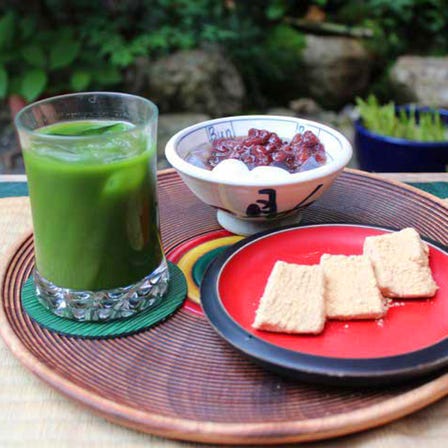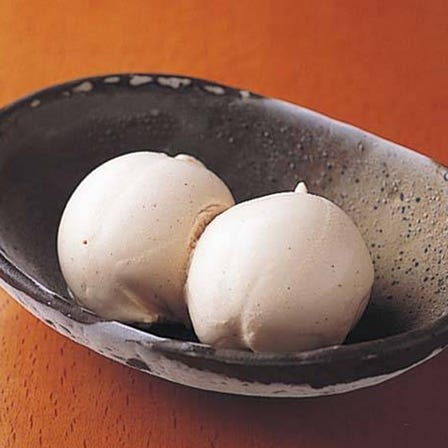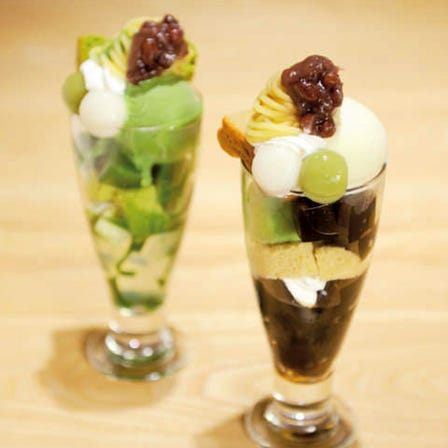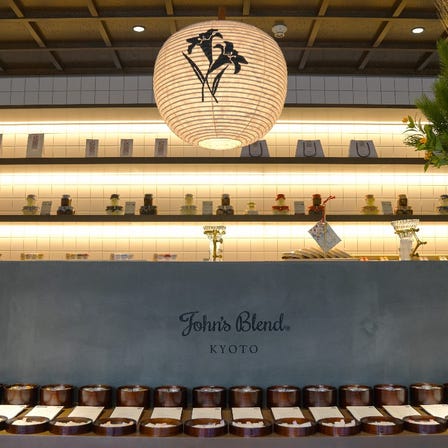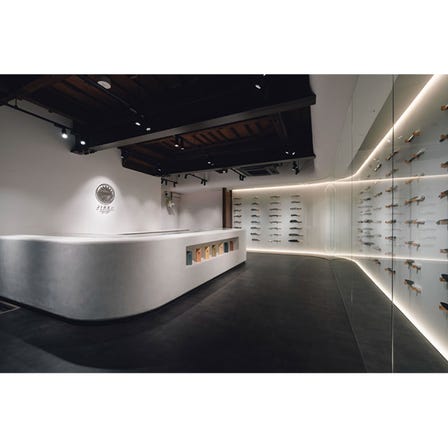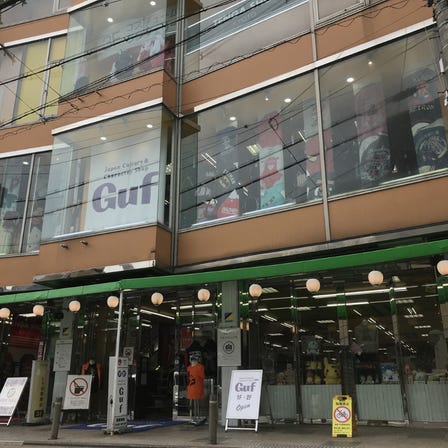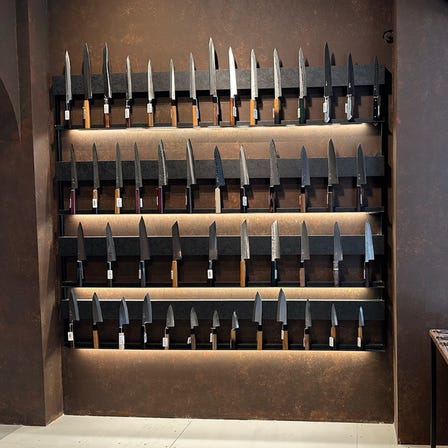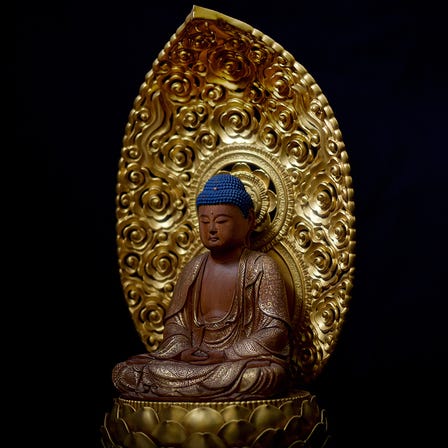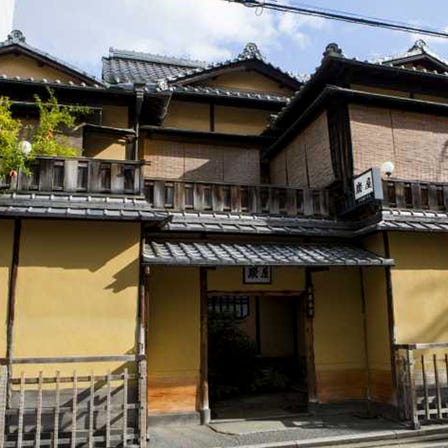Description
As the Kamakura period drew to a close in 1291, the Zen monk Mukan Fumon built Nanzen-ji Temple at the base of Mt. Higashi at the request of cloistered Emperor Kameyama. The temple is Japan's first Zen chokugan-ji (Zen temple built at the order of the emperor). During the Muromachi period, the temple enjoyed special status superior to the Kyoto Gozan (Five Great Zen Temples of Kyoto) and the Kamakura Gozan (Five Great Zen Temples of Kamakura), ranking higher than all other Zen temples in Japan. Although its original buildings were burned down during the Onin War, Ishin Suden later rebuilt them. The vast grounds contain the Chokushi-mon gate, San-mon gate, Hatto, and Hojo are aligned in a straight line running from east to west and surrounded by 12 sub-temples. Spend some time exploring points of interest like the San-mon gate, which appears in Kabuki, and the Karesansui (dry landscape) garden, which has been designated as a national place of scenic beauty that attracts visitors all year round.
The San-mon gate, the location of a famous kabuki scene, commanding its splendid view of Kyoto
Otherwise known as ”Tenka Ryu-mon,” the San-mon gate is one of Japan's great three gates and classed as an Important Cultural Property. The double-story gate towers 22 meters high, and the upper level is called ”Gohoro.” The gate appears in the kabuki play (traditional drama performed by male actors) ”San-mon Gosan-no-kiri,” in which the bandit Goemon Ishikawa, standing on the upper level of the San-mon gate, utters his famous line, ”What a marvelous view, what a marvelous view” while smoking a pipe and taking in the blooming cherry trees. Since visitors are allowed to enter the upper level, you can admire the marvelous view of the temple grounds and the cityscape of Kyoto spreading beneath your eyes.
Ohojo—decorated with 124 wall paintings created by Kano-school artists
The Hojo in Nanzen-ji Temple has been designated as a National Treasure. It actually comprises two parts: the Ohojo and Kohojo; the former was once a building of the old Imperial Palace granted to the temple. The Ohojo's interior was decorated with wall paintings painted by artists of the Kano school from the early Momoyama period. Currently there are 124 paintings available for public viewing, 84 or which are reproductions. The originals of these 84 images are stored in the temple's treasure house, and the reproductions adopt the color scheme used during the early and mid Edo period. The Hojo garden in front of the Ohojo is a Karesansui garden designed by Enshu Kobori and commonly known as ”Tora-no-Ko Watashi-no-Niwa (the tiger-cub crossing garden).” This garden has been designated as a national place of scenic beauty.
The Kohojo, renowned for Tanyu Kano's Gunko-zu, and Myoshin Garden
Enter the Kohojo, which is considered to be part of the remains of Fushimi-jo Castle, and you'll encounter the ”Tora no Ma (Tiger Room)” with its 40 screens of Gunko-zu (herds of tiger). These are said to have been painted by Tanyu Kano. The Kohojo's garden is called ”Myoshin Garden” and is renowned for its design that depicts the heart. It is a tranquil Karesansui-style Zen garden where rocks are arranged to represent the Chinese character for the heart.
Location Information
-
- Address
-
Nanzenjifukuchicho, Sakyo-ku, Kyoto-shi, Kyoto, 606-8435
-
- Nearest Station
-
Keage Station
・ Tozai Line
10 minutes on foot
-
- Phone Number
-
075-771-0365Available languagesonly in Japanese
-
- Hours
-
8:40am - 4:30pm
*From December to February
8:40am - 5:00pm
*From March to November
-
- Closed
- None
*12/28 to 12/31
-
- Public Site
- Official Site
Recommended Spots in Area
- Visiting
- Eating
- Shopping
- Lodgings
-
 Yasaka ShrineKyoto Station, To-ji TempleShrines
Yasaka ShrineKyoto Station, To-ji TempleShrines -
 The Yoshino Cherry Trees of the Philosopher’s WalkKyoto Station, To-ji TempleSpring
The Yoshino Cherry Trees of the Philosopher’s WalkKyoto Station, To-ji TempleSpring -
 Maruyama ParkGion, Kawaramachi, Kiyomizu-dera TempleParks
Maruyama ParkGion, Kawaramachi, Kiyomizu-dera TempleParks -
 Puppy Café Rio KyotoGion, Kawaramachi, Kiyomizu-dera TempleCulture Experience
Puppy Café Rio KyotoGion, Kawaramachi, Kiyomizu-dera TempleCulture Experience -
 Pontocho & Kiyamachi StreetGion, Kawaramachi, Kiyomizu-dera TempleHistorical Places
Pontocho & Kiyamachi StreetGion, Kawaramachi, Kiyomizu-dera TempleHistorical Places -
 Heian-jingu ShrineGion, Kawaramachi, Kiyomizu-dera TempleShrines
Heian-jingu ShrineGion, Kawaramachi, Kiyomizu-dera TempleShrines
-
Kyoto Nama ChocolatGion, Kawaramachi, Kiyomizu-dera TempleChocolate
-
Café SoireeGion, Kawaramachi, Kiyomizu-dera TempleOther Cafes and Sweets
-
Bunnosuke Chaya HontenGion, Kawaramachi, Kiyomizu-dera TempleOther Cafes and Sweets
-
Gion Kinana HontenGion, Kawaramachi, Kiyomizu-dera TempleOther Cafes and Sweets
-
Kaden Kyoame Gion KoishiGion, Kawaramachi, Kiyomizu-dera TempleOther Cafes and Sweets
-
KikusuiGion, Kawaramachi, Kiyomizu-dera TempleFrench Food
-
John's Blend Kyoto Nishiki-Ichiba StoreGion, Kawaramachi, Kiyomizu-dera TempleOther Shopping
-
JIKKO Cutlery PontochoGion, Kawaramachi, Kiyomizu-dera TempleHousehold Goods Stores
-
Japan Culture & Character Shop Guf Kyoto storeGion, Kawaramachi, Kiyomizu-dera TempleGift Shops
-
MUSASHI JAPAN Kyoto Kawaramachi Knife ShopGion, Kawaramachi, Kiyomizu-dera TempleHousehold Goods Stores
-
MUSASHI JAPAN Kyoto Kiyomizu Knife ShopGion, Kawaramachi, Kiyomizu-dera TempleHousehold Goods Stores
-
Yoshida Gennojo-Roho Kyoto Buddhist AltarsNijo Castle, Kyoto Imperial PalaceGift Shops
-
Sora Niwa Terrace Kyoto BetteiGion, Kawaramachi, Kiyomizu-dera TempleHotels
-
Tabist Kiki Hotel Kyoto Sanjo TakakuraNijo Castle, Kyoto Imperial PalaceJapanese Guest Houses (Minshuku)
-
Sumiya RyokanNijo Castle, Kyoto Imperial PalaceRyokan
-
Rinn Hostel MiyagawachoGion, Kawaramachi, Kiyomizu-dera TempleEconomy Hotels
-
Kyoto Gion HotelGion, Kawaramachi, Kiyomizu-dera TempleEconomy Hotels
-
Six Senses KyotoKyoto Station, To-ji TempleHotels





















